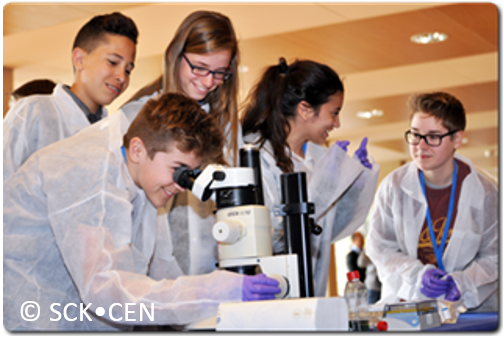Synthesis and host-guest properties of aza- and thiapillararenes: toward novel heteramacrocyclic members within the pillararene family

Category
Ph D Defense
Date
2024-10-23 17:00
Venue
KU Leuven, Aula, Auditoria M, 00.06 - Celestijnenlaan 200M
3001 Leuven, België
3001 Leuven, België
Promovendus/a: Sem Bleus
Promotor(en): Prof. dr. Wim Dehaen
Pillararenes are an intriguing group of ring-shaped molecules that have received much attention within chemistry. These structures have a unique feature: a cavity able to trap other molecules. Their possible applications can improve our daily lives, from purifying water and detecting pollution to delivering medicines to the right place in the body. If we could specifically modify the shape and size of the cavity, the possibilities would be significantly extended. However, changing the structure is not easy.Because pillararenes are so special, scientists explore many molecules resembling them and evaluate if they possess properties pillararenes do not have. One way to do so is by incorporating certain atoms called heteroatoms. Introducing these atoms can change the substances pillararenes trap, for instance, because the size, shape or flexibility is altered. The problem is that these so-called heterapillararenes have not been widely studied.
This research focuses on creating new heterapillararenes and studies which molecules they can trap. First, we efficiently made several building blocks that can be used to make heterapillarenes. Then, we connected them to give the actual structures, which are larger and more complex than pillararenes. The benefits of our method are that we can easily make the molecules and modify them where needed. These findings mean that the structures can be made in large quantities and tailored to the desired application. More importantly, we show that molecules different than those bound by pillararenes are trapped. The new structures, thus, could lead to complementary technological advances like the delivery of other drugs or the removal of different pollutants. Potentially, these new heterapillararenes could one day impact our daily lives.
Pillararenes are an intriguing group of ring-shaped molecules that have received much attention within chemistry. These structures have a unique feature: a cavity able to trap other molecules. Their possible applications can improve our daily lives, from purifying water and detecting pollution to delivering medicines to the right place in the body. If we could specifically modify the shape and size of the cavity, the possibilities would be significantly extended. However, changing the structure is not easy.
Because pillararenes are so special, scientists explore many molecules resembling them and evaluate if they possess properties pillararenes do not have. One way to do so is by incorporating certain atoms called heteroatoms. Introducing these atoms can change the substances pillararenes trap, for instance, because the size, shape or flexibility is altered. The problem is that these so-called heterapillararenes have not been widely studied.
This research focuses on creating new heterapillararenes and studies which molecules they can trap. First, we efficiently made several building blocks that can be used to make heterapillarenes. Then, we connected them to give the actual structures, which are larger and more complex than pillararenes. The benefits of our method are that we can easily make the molecules and modify them where needed. These findings mean that the structures can be made in large quantities and tailored to the desired application. More importantly, we show that molecules different than those bound by pillararenes are trapped. The new structures, thus, could lead to complementary technological advances like the delivery of other drugs or the removal of different pollutants. Potentially, these new heterapillararenes could one day impact our daily lives.
All Dates
- 2024-10-23 17:00
Powered by iCagenda





